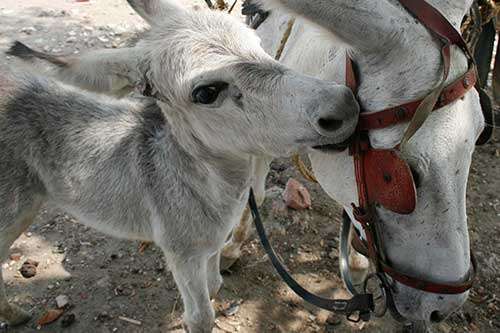Spotting pain in donkeys – learning the language

Vets in Pakistan working for global equine welfare charity the Brooke have collaborated with the University of Bristol on a newly published paper to discover whether a donkey is in pain by just being observed.
The research, funded by the Brooke in the UK and carried out by the University's School of Veterinary Sciences and Brooke Pakistan looked at the proportion of working donkeys in Pakistan that are affected by painful conditions and also investigated behavioural patterns that may help in identifying these conditions. The behaviour of 134 male donkeys was observed before they were examined by Brooke vets.
This is the final paper in a set of three. The combined findings of these studies can be applied by all those working with donkeys to improve the understanding of donkey behaviour and to improve ways of identifying their welfare needs even when veterinary equipment is not available.
Melissa Upjohn, Research Co-ordinator at the Brooke, said: "Owners and local health providers come into contact with animals affected by conditions that aren't always easy to diagnose without equipment. Whilst some conditions, such as the 97 per cent of the donkeys seen had abnormal lung sounds, do require a stethoscope and a quiet area to do an examination, there are other problems, such as the 98 per cent of donkeys that were lame, for which behaviour such as weight shifting and leg lifting may enable them to be identified visually whilst at rest".
"The Brooke is concentrating on training local service providers and owners so they can better look after their animals, and research like this helps us to make this training both practical and evidence based."
Dr Becky Whay, Reader in Animal Welfare and Behaviour in the School of Veterinary Sciences, added: "Spotting signs of pain and clinical problems in donkeys is always difficult as they tend to 'suffer in silence'. By carefully studying their behaviour we have started to learn how to recognise much more reliably when they are in pain and in need of attention."
More information: "Clinical abnormalities in working donkeys and their associations with behaviour." Vet Rec Open 2015;2:e000105 DOI: 10.1136/vetreco-2014-000105
Provided by University of Bristol





















